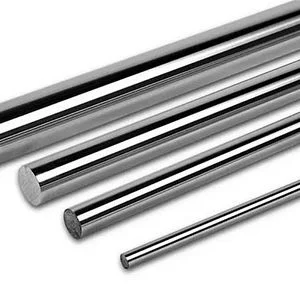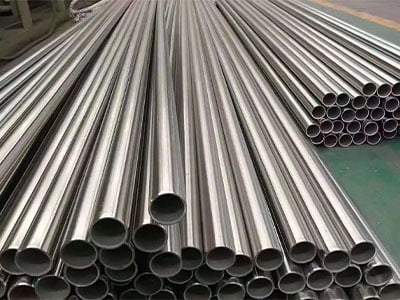Introduction
When it comes to selecting the right material for construction, manufacturing, or any industrial project, choosing the appropriate type of stainless steel can make a significant difference. Among the various grades available, 316L stainless steel stands out for its superior properties and versatility. This comprehensive guide will explore why 316L stainless steel is an excellent choice for your next project. We will delve into its unique characteristics, benefits, applications, and provide valuable insights to help you make an informed decision.
Understanding 316L Stainless Steel

What is 316L Stainless Steel?
316L stainless steel is a low-carbon variant of 316 stainless steel, known for its molybdenum-bearing properties within the austenitic stainless steel family. The designation “L” in 316L specifically denotes its “low carbon” content, which is capped at a maximum of 0.03%. This reduction in carbon content significantly enhances the material’s resistance to sensitization, a phenomenon that can occur during welding. Consequently, 316L stainless steel exhibits superior corrosion resistance, particularly after welding, making it an ideal choice for applications requiring robust protection against corrosive environments.
- Composition: Contains 16-18% chromium, 10-14% nickel, and 2-3% molybdenum.
- Low Carbon Content: Reduces the risk of corrosion in welded structures.
- Austenitic Structure: Provides excellent toughness and ductility.
Key Properties of 316L Stainless Steel
316L stainless steel possesses several key properties that make it highly desirable for various applications:
- Corrosion Resistance: Excellent resistance to corrosion in various environments, including marine and chemical exposure.
- Weldability: Easily welded without the risk of sensitization, making it suitable for heavy-duty welding applications.
- High Temperature Resistance: Maintains strength and stability at high temperatures.
- Durability: Exceptional toughness and durability, even in extreme conditions.
- Non-Magnetic: Typically non-magnetic in annealed conditions but can become slightly magnetic when cold worked.
Top Benefits of Using 316L Stainless Steel
Superior Corrosion Resistance
One of the primary reasons for choosing 316L stainless steel is its superior corrosion resistance. The addition of molybdenum enhances its ability to resist pitting and crevice corrosion, making it ideal for use in harsh environments such as:
- Marine Environments: Resists corrosion from saltwater and brine.
- Chemical Processing: Suitable for handling corrosive chemicals and acids.
- Food and Beverage Industry: Prevents contamination and maintains hygiene.
Excellent Weldability
316L stainless steel is known for its excellent weldability. The low carbon content reduces the risk of carbide precipitation during welding, which can lead to intergranular corrosion. This makes it a preferred choice for:
- Structural Components: Ensures strong and durable welded joints.
- Pressure Vessels: Ideal for welding applications in high-pressure environments.
- Fabrication Projects: Allows for easy and efficient fabrication without compromising corrosion resistance.
High Temperature Resistance
The high temperature resistance of 316L stainless steel makes it suitable for applications that involve exposure to elevated temperatures. It retains its mechanical properties and structural integrity, making it ideal for:
- Heat Exchangers: Withstands high-temperature fluids and gases.
- Furnace Parts: Suitable for components exposed to high heat.
- Industrial Boilers: Maintains performance under thermal stress.
Enhanced Durability and Strength
316L stainless steel is known for its exceptional durability and strength. It can withstand heavy loads and mechanical stress, making it suitable for demanding applications such as:
- Construction: Ideal for structural components and building materials.
- Machinery: Suitable for manufacturing durable and long-lasting machine parts.
- Transportation: Used in the production of vehicles and transportation equipment.
Versatility in Applications
The versatility of 316L stainless steel makes it applicable in a wide range of industries and applications. Some common uses include:
- Medical Devices: Used in surgical instruments and implants due to its biocompatibility.
- Pharmaceutical Equipment: Maintains cleanliness and resists contamination.
- Oil and Gas Industry: Suitable for offshore and onshore applications due to its corrosion resistance.
Table: Comparison of 316L Stainless Steel with Other Grades
| Property | 304 Stainless Steel | 316 Stainless Steel | 316L Stainless Steel |
|---|---|---|---|
| Corrosion Resistance | Good | Better | Best |
| Carbon Content | Up to 0.08% | Up to 0.08% | Up to 0.03% |
| Molybdenum Content | None | 2-3% | 2-3% |
| Weldability | Good | Good | Excellent |
| High Temperature Resistance | Good | Excellent | Excellent |
| Applications | General-purpose | Marine, chemical processing | Marine, chemical processing, welding |
Practical Applications of 316L Stainless Steel

Marine Industry
In the marine industry, 316L stainless steel is widely used for its superior corrosion resistance to saltwater. Applications include:
- Boat Fittings: Ensures longevity and resistance to seawater corrosion.
- Marine Hardware: Suitable for manufacturing bolts, nuts, and screws used in marine environments.
- Desalination Plants: Used in equipment exposed to brine and saline water.
Chemical Processing Industry
The chemical processing industry relies on 316L stainless steel for handling corrosive chemicals and maintaining safety standards. Applications include:
- Storage Tanks: Suitable for storing corrosive liquids and gases.
- Pipelines: Used in transporting chemicals due to its resistance to corrosion.
- Reactor Vessels: Ideal for reactors dealing with high-temperature and corrosive substances.
Medical and Pharmaceutical Industry
316L stainless steel’s biocompatibility and ease of sterilization make it ideal for medical and pharmaceutical applications. Uses include:
- Surgical Instruments: Ensures hygiene and prevents contamination.
- Medical Implants: Biocompatible and corrosion-resistant for long-term use.
- Pharmaceutical Equipment: Maintains cleanliness and resists chemical corrosion.
Food and Beverage Industry
In the food and beverage industry, 316L stainless steel is used to maintain hygiene and prevent contamination. Applications include:
- Processing Equipment: Used in manufacturing food processing machinery.
- Storage Containers: Ideal for storing food and beverages without risk of contamination.
- Kitchen Utensils: Ensures durability and resistance to food acids.
Conclusion
Choosing 316L stainless steel for your next project ensures a combination of superior corrosion resistance, excellent weldability, high temperature resistance, and enhanced durability. Its versatility makes it suitable for a wide range of applications across various industries, from marine and chemical processing to medical and food and beverage industries. By understanding its unique properties and benefits, you can make an informed decision that will enhance the performance and longevity of your projects.
FAQ
What makes 316L stainless steel more corrosion-resistant than other grades?
The addition of molybdenum and the lower carbon content in 316L stainless steel significantly enhance its corrosion resistance, making it more resistant to pitting and crevice corrosion in harsh environments.
Can 316L stainless steel be easily welded?
Yes, 316L stainless steel has excellent weldability due to its low carbon content, which reduces the risk of carbide precipitation and subsequent intergranular corrosion. It is suitable for various welding applications, including structural components and pressure vessels.
What industries commonly use 316 stainless steel?
316 stainless steel is widely used in industries such as marine, chemical processing, medical and pharmaceutical, food and beverage, and construction due to its superior properties and versatility.
How does 316 stainless steel perform at high temperatures?
316 stainless steel maintains its mechanical properties and structural integrity at high temperatures, making it suitable for applications such as heat exchangers, furnace parts, and industrial boilers.
Why is 316 stainless steel preferred for medical devices and implants?
316 stainless steel is biocompatible, corrosion-resistant, and easy to sterilize, making it ideal for use in medical devices and implants where hygiene and longevity are critical.
How does 316 stainless steel compare to 304 stainless steel?
While both 304 and 316 stainless steels are austenitic and offer good corrosion resistance, 316 contains molybdenum, which enhances its corrosion resistance, particularly in chloride environments. 316 is also more resistant to pitting and crevice corrosion.
Is 316 stainless steel suitable for food processing equipment?
Yes, 316 stainless steel is widely used in the food and beverage industry due to its corrosion resistance, durability, and ability to maintain hygiene, preventing contamination of food products.
What are the benefits of using 316 stainless steel in construction?
In construction, 316 stainless steel provides enhanced durability, corrosion resistance, and strength, making it suitable for structural components, building materials, and architectural applications exposed to harsh environmental conditions.
Can 316 stainless steel be used in high-pressure applications?
Yes, 316 stainless steel is suitable for high-pressure applications due to its strength, durability, and resistance to corrosion. It is commonly used in pressure vessels, pipelines, and reactor vessels in chemical processing and other industries.
How does the low carbon content of 316 stainless steel benefit welding applications?
The low carbon content in 316 stainless steel reduces the risk of carbide precipitation during welding, which can lead to intergranular corrosion. This makes it an ideal choice for welding applications, ensuring strong and corrosion-resistant welded joints.
